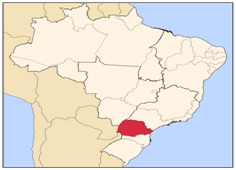
Introduction
Shale gas is methane (natural gas) that is trapped underground in impermeable shale rock. For this reason, shale gas does not flow through the rock like conventional natural gas, so it cannot be extracted simply by drilling a well. The rock needs to be fractured to free the gas.
The exploitation of shale gas requires a highly controversial technique known as hydraulic fracturing, or fracking. This extraction process consists of injecting up to 10 million litres of water in one well alone and 609 chemical substances (some of which are radioactive and carcinogenic). The fluid is injected into horizontal wells at high pressure to fracture the rock and release the natural gas within.
The vertical perforation generally reaches a depth of at least two thousand metres and up to three thousand metres, which means wells pass groundwater and aquifers. Large numbers of wells need to be drilled at regular intervals to extract the same quantities of gas that would be extracted with just a few wells were the gas conventional. This technique has been banned in several countries including Germany, Italy, France and Bulgaria.
Click here for the factsheet (4 pages): FS_035_Parana basin

The project ENVJUSTICE has received funding from the European Research Council (ERC) under the European Union’s Horizon 2020 research and innovation programme (grant agreement No. 695446)